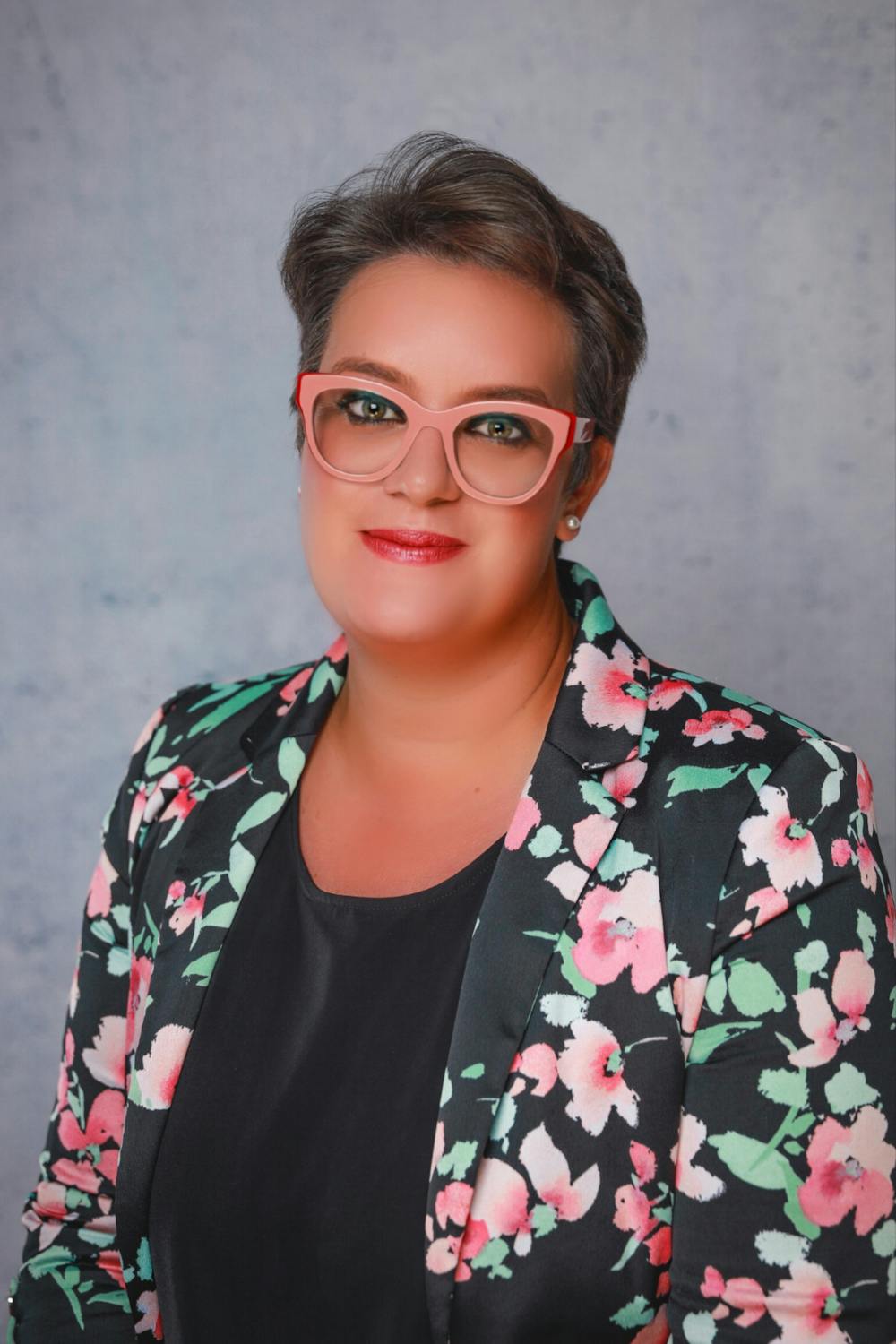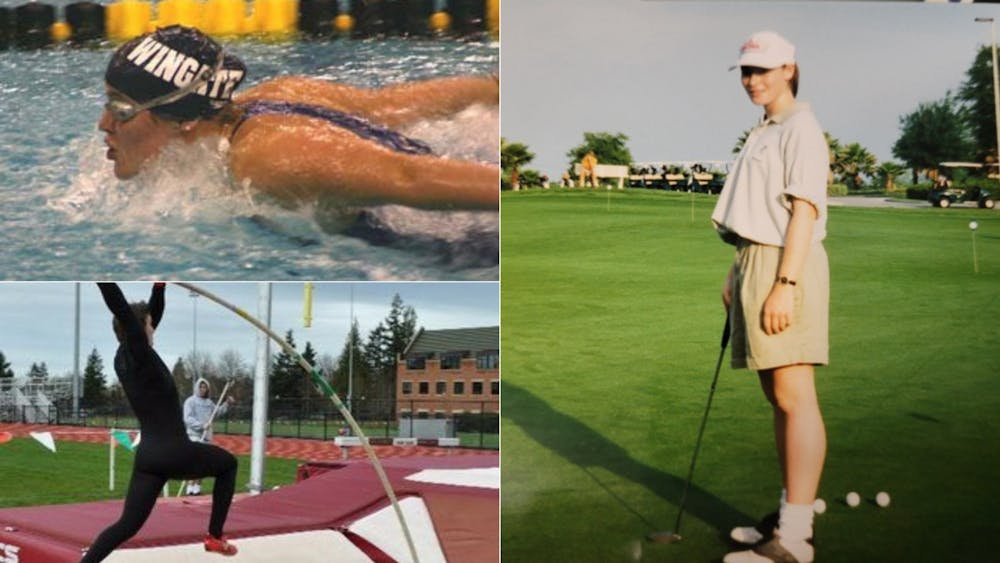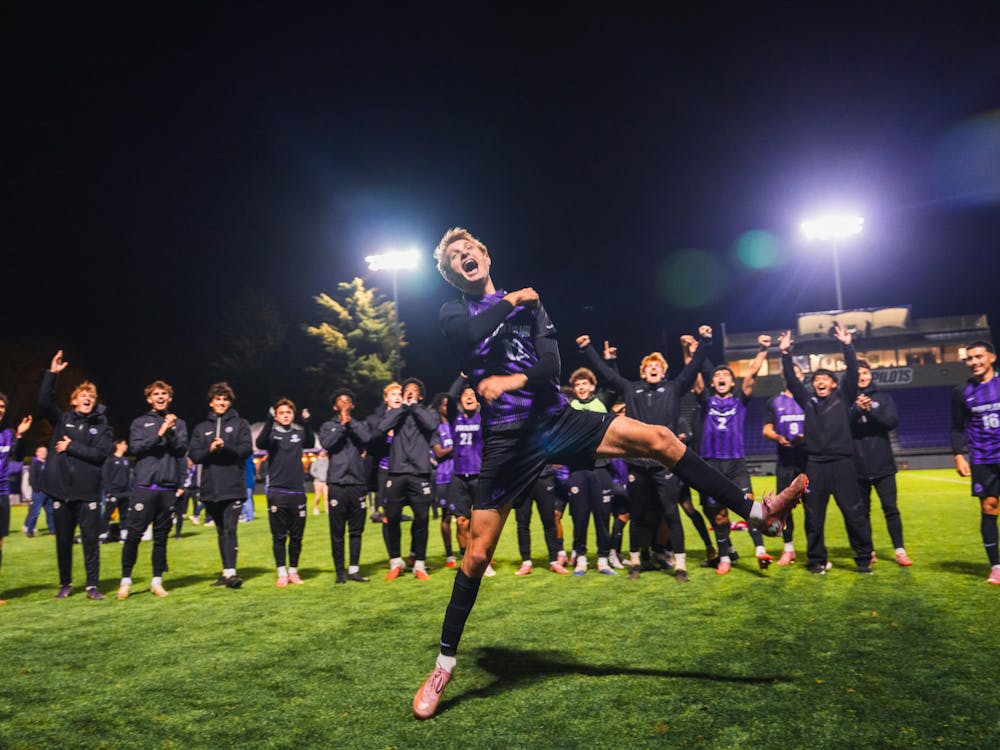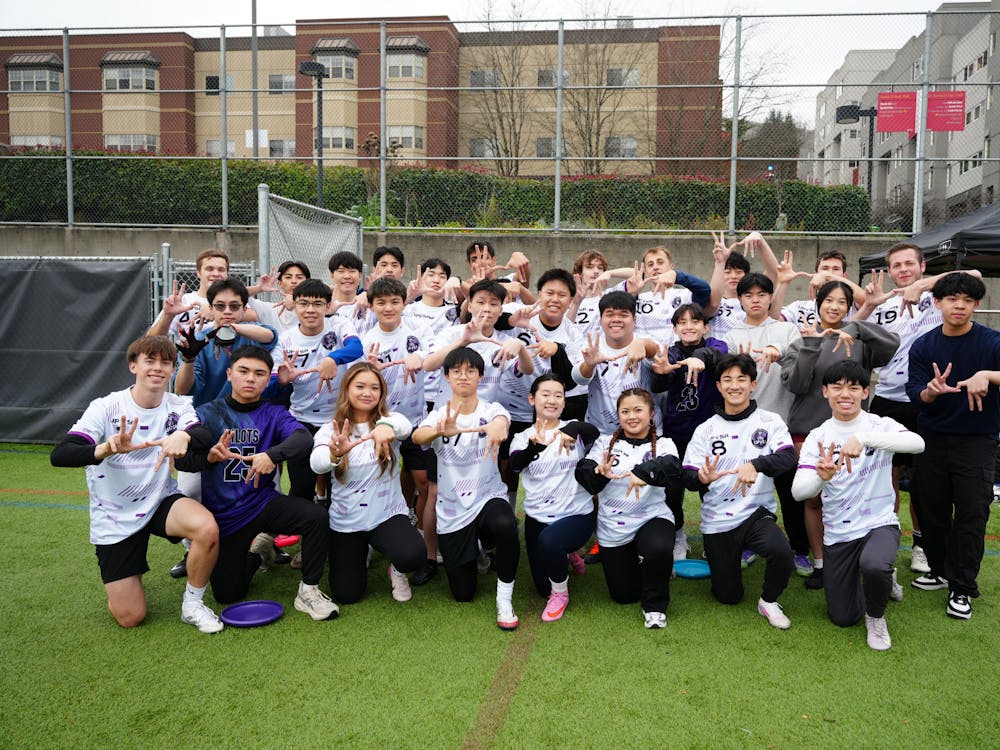College professors, revered for their academic achievements, have intriguing collegiate journeys often unknown to students. Several professors at the University of Portland are former successful student-athletes, whose experiences continue to shape their lives today.
Three of UP’s professors share their most memorable experiences of being student-athletes, shedding light on their collegiate journeys and enduring passions.
Lara-Zuzan Golesorkhi

Faculty headshot of Lara-Zuzan Golesorkhi. Photo courtesy of Photo Planet.
Lara-Zuzan Golesorkhi is an assistant professor of political science and global affairs at UP. But, before her teaching days, she was a collegiate swimmer at Wingate University in North Carolina, a NCAA Division II school.
Golesorkhi first developed a passion for swimming at four years old, and ever since, her dedication to the sport has remained unwavering.
“I just truly enjoyed the water. I had a good connection with it,” Golesorkhi said. “It really helped me feel good. There was so much joy.”
Her love for swimming led her to compete competitively in high school and at the German National Championships, earning several accolades and honors for her performance.
“I have a few championships under my belt,” Golesorkhi said. “In 2006 I was a German National Champion in the 50-meter butterfly and I placed third in the 100-meter butterfly.”
Golesorkhi’s accolades at the German National Championships and her stellar academic performance earned her several offers from colleges in the United States. Ultimately, Golesorkhi decided to accept Wingate University’s offer, as they gave her the best financial scholarship package split between academic and athletic aid.

Unfortunately, Golesorkhi struggled with injuries throughout her time as a student-athlete at Wingate. But, with her perseverance to recover and the help of a top athletic training staff, she got back in the water. Her efforts paid off at the end of her first year when she won Freshman Female Athlete of the Year.
“One of my favorite moments was that even though I had a shoulder injury in my first year, I won Freshman Female Athlete of the Year,” Golesorkhi said. “To be recognized by the university and the athletic department was huge.”
Drawing on her experiences and her interactions with student-athletes at UP, Golesorkhi emphasizes that collegiate student-athletes should strive to learn, enjoy and appreciate playing their sport as much as they can.
“All the things that I do are because of sports and swimming,” Golesorkhi said.“It becomes so much of a part of you. Even if your athletic career doesn’t work out, you’ve learned so much and the sport has given you so much, so use it wherever you’re placed next.”
Matthew Barner

Matthew Barner, an assistant professor of civil engineering at UP, was a college pole vaulter for the track and field team at Pacific Lutheran University, a NCAA Division III liberal arts school in Tacoma, Washington.
Barner was introduced to pole vaulting during high school by his sister when he sought a way to occupy his time during the off-season of club baseball. Although Barner considered pursuing collegiate football or volleyball alongside track, he ultimately decided to dedicate himself solely to track and field.
“I met with their head track coach,” Barner said. “I had a really good personal meeting with them.”
Division III colleges can’t give out athletic scholarships, so the allure of playing a Division III sport is more from the team culture, the fun of competing and making friends. Pacific Lutheran University didn’t have a pole-vaulting-specific coach, so it was up to Barner and his teammates to push each other to get better together.
“We would develop our own training programs and exercises,” Barner said. “Then we would watch each other and give tips or advice. The friendships I made with them were really special because we were all really supportive and wanted to get the best out of each other.”
Looking back on his college pole vaulting career, Barner said being a student-athlete helped him make amazing, long-lasting friendships and stay structured and focused in school. He still keeps in contact with friends from his college track team and will never forget the memories they made as teammates.
“We all still keep in touch,” Barner said. “They were at my wedding a couple of years ago. Pole vaulters like to do handstands a lot to get used to the feeling of being upside down, so the guy pole vaulters and I were doing handstands on the dancefloor.”
As a former Division III college athlete, Barner recognizes the struggle that many student-athletes face when they decide to retire from their sport. He advises student-athletes to get ahead of the game and think about life after their collegiate athletic career.
“Start thinking about life beyond your student-athlete college experience,” Barner said.“It’s a big identity shift and it’s hard to see yourself go through that transition because you’ve existed as an athlete for so long. Prepare for that moment, because it’s a really tough awakening.”
Tammy VanDeGrift

Tammy VanDeGrift, a professor of computer science at UP, was a collegiate golfer for Gustavus Adolphus College, a NCAA Division III school, in St. Peter, Minnesota.
While she played many sports when she was younger, VanDeGrift enjoyed playing golf with her family and decided to take up competitive golf in her sophomore year of high school. When she looked at colleges, she attended an informational event where she talked to recruiters from colleges in Minnesota.
Shortly after, the golf coaches for Gustavus Adolphus College and one other college located in Minnesota called her. VanDeGrift visited both schools and met the golf teams before ultimately deciding to attend and play golf at Gustavus Adolphus College.
Her practice schedule was busy as her season was split into both a Fall and Spring season. VanDeGrift said that she enjoyed her daily practices and liked arriving at school early for the pre-season.
“For the fall season, we started in the middle of August,” VanDeGrift said. “I got to move on campus before all the other freshmen. It was awesome because I got to be there and learn the ropes of how to use the dining hall and just meet other people before the rush of the new class came in.”

She held a high standard for herself in school and on the golf course, leading to her qualifying individually for the national tournament in her sophomore year. One of her favorite memories from her collegiate golf career was at a particular tournament where she shot even par.
An even par score in golf is when a player's score matches the course's par value. For example, if the course par was 75 and a player took 75 strokes to complete the course, then the number of strokes taken would be equal to the course par value.
“It was probably my best round ever,” VanDeGrift said. “It was a magical feeling to know that every time I lined up for a put I pretty much knew I was going to hit it. It was unbelievable.”
During the same tournament, she was surprised by an old friend she met while playing golf in high school.
“In high school, I played at the Evergreen Golf Course in Mount Angel, Oregon,” VanDeGrift said. “This lady lived on the fifth hole and anytime I was on the course she came out and said hi. I really got to know her. She happened to have relatives in Minnesota and she surprised me at my meet.”
Division III golf is less competitive and allowed VanDeGrift to focus more on academics. She viewed herself as a student first and an athlete second — but she believes that being a student-athlete improved her efficiency and grades.

“I was actually a better student when I was in competition season,” VanDeGrift said. “ I had to have everything structured. My calendars were crazy. Every minute of the day I was efficient.”
VanDeGrift believes that student-athletes can use calendering techniques such as color-coded planners or online calendars to maximize their time and efficiency. Being conscientious about time is extremely important to being a successful student-athlete.
Overall, she is extremely thankful for the opportunity to play golf in college and encourages students to work hard in school but also to remember to have fun hobbies as well.
“I think it’s important to have fun in life,” VanDeGrift said. “To pick something that you want to work at and take an iterative approach. That’s how I am as a teacher: always asking how I can make this a little better. That’s all from my golfing mentality.”
Aidan Hyde is a sports reporter at The Beacon. He can be reached at hydea25@up.edu.








